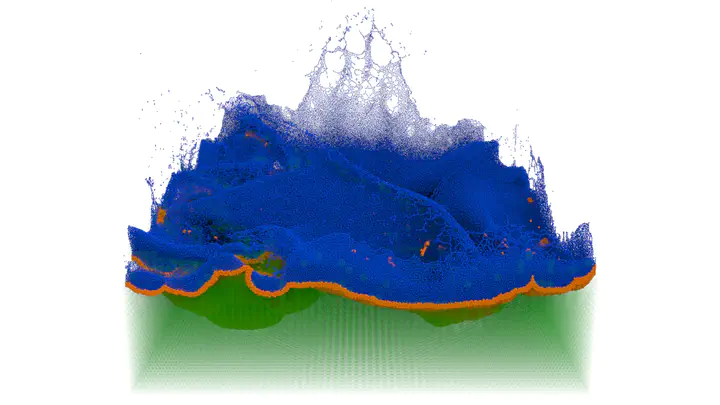 Image credit: Unsplash
Image credit: Unsplash
Abstract
The discretization of fluids can significantly affect computation times of traditional SPH methods. Even if state-of-the-art SPH methods such as divergence-free SPH (DFSPH) produce excellent small-scale details for complex scenarios, simulating a large volume of liquid with these particle-based approaches is still highly expensive considering that only a fraction of the particles will contribute to the visible outcome. This paper introduces a hybrid Eulerian-DFSPH method to reduce the dependency of the number of particles by constraining kernel-based calculations to a narrow band of particles at the liquid surface. A coarse Eulerian grid handles volume conservation and leads to a fast convergence of the pressure forces through a hybrid method. We ensure the stability of the liquid by seeding larger particles (which we call fictitious) in the grid below the band and by advecting them along the SPH particles. These fictitious particles require a two-scale DFSPH model with distinct masses inside and below the band. The significantly heavier fictitious particles are used to correct the density and reduce its fluctuation inside the liquid. Our approach effectively preserves small-scale surface details over large bodies of liquid, but at a fraction of the computation cost required by an equivalent reference high-resolution SPH simulation.
Supplementary notes can be added here, including code, math, and images.